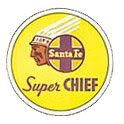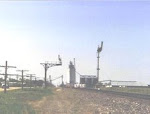Thursday, August 20, 2009
Writing us off
Sounds perfectly reasonable; stimulus money put to work to benefit the ailing auto industry; to benefit the environment through the retirement of older gas-guzzling cars; and to help people afford a new car. What could be a better use of our money?
Hmmm. It's hard to argue with the benefit to the automakers and dealers. Ford, GM and Chrysler have all begun to scramble to keep up with orders for qualifying cars. And if you got $4500 Obamadollars to put toward the purchase of a new ride you are a happier camper than many of the rest of us.
But as with all things the government does, it might pay to ask a few questions:
What happens to the car (read: clunker) you trade in? The short answer is that it goes to the scrapyard. If you are turning in a rusty 1976 Olds 98 there is little to say. But if you are trading a perfectly serviceable 10-year-old GMC pickup or Chevy Suburban, especially one with lower miles, they are sending a good used car to the crusher. It is, as they say, the law.
"Big deal," you say. "Get them off the road. They burn too much gas."
True enough, but what does that do to, say, the used car market? Decent cars that might have been available to people with reduced purchasing power might soon be hard to find. That forces these people to keep their older-yet land barges on the road, smoking up the interstate with a thick cloud of heavy blue oil-rich exhaust. Cars they might have been able to afford and use for years to come are soon to be four-by-four iron cubes. Used cars for all of us, with the market being artificially tampered, will become a little more scarce and expensive to those who least can afford it.
Really? They crush these cars? Yup. they do, no matter how drivable they are. Had you asked where they go that might be an even better question, because before they are crushed, an inspector of the United States of America is obliged to check the "VIN" numbers of the clunkers, and compare them to the lists of numbers of trade-in's. The purpose of this is to prevent the gas-guzzling clunkers from finding their ways back onto American highways at great cost to our economy.
With the hiring of hundreds of inspectors to keep up with the piles of accumulating clunkers, no one has mentioned that cost to the economy. Or the cost of crushing and storing these vehicles until they can go to the steel company. It is rumored that one scrapper has several hundred acres of cars in a suburban Kansas City area county waiting for US Government clearance to be crushed. Now there is a cost to him which he will have to pass on to the rest of us, not to mention the cost of old leaky vehicles sitting on pastureland, just inviting an EPA impact statement to be completed.
What happens to the crushed cars? That's another nail in the coffin. An influx of scrap iron all over the country will drive prices down. With an economy already ailing this sector will ail even more than it was.
So we have a government program giving away money that was borrowed from the Chinese, to people who buy new cars if they are willing to trade for a higher-mileage model. It corrupts the used car market, denying poor people an opportunity to get a better car; wastes more Chinese loan money to hire so=called inspectors to verify that these trade-ins are scrapped; pollutes the countryside, and depresses the steel industry.
Any other questions? What's that? What's the matter with cars selling well, you say? Nothing I suppose.
Except half of them are Japanese. Ford, GM and Chrysler are just under fifty percent of the new car sales in the clunker program. The rest are from overseas. Even if manufactured here, the money goes back to Japan, Korea or Germany. The most optimistic among us will cheer at the fuel that will be saved with the old clunkers off the road.
But a few of us don't know why the Chinese keep loaning us money.
Like Kramer once said to Jerry, "...but they know. And they're the ones writing it off!"
Tuesday, August 4, 2009
C O L O R A D O !

Hello again. Back, like a bad penny. I took a vacation from everything--work, responsibility, and even the blog. Time off does that to you. But oh, what a good time we had. And ultimately it is good to get back.
Hallet Peak's reflection in Bear Lake
Since that last post on July 3, we made our annual journey to Colorado. Mary Ann and I left on the 9th, after much fretting over who will do what for Grandma, and at what time and how effectively. There was the usual family angst from hurt feelings and things said in haste, but all finally rested gently. Disruption in the life of a frail senior person is nothing with which to be trifled, I relearned.
We left easily, in mid-morning, choosing not to escape the city into the setting sun or in the early hours of darkness as has been our custom. It was just the two of us, to start with at least, so we chose the path of least resistance and drove to Hays, enjoying some gourmet turkey sandwiches for lunch as we drove. At Hays, it was hot but dry and the sky was nearly cloudless. We checked into the Fairfield Inn there, a superior example of a modern hostelry. We enjoyed the pool and the quiet, being hours ahead of the rest of our kind. It was nice to sit alternately in the sun and cool off in the pool, wondering what the poor people were doing.
Kirches rolled in as we left the pool, and the Sharps were not far behind. The nine of us went to Gella's Diner and Mini-Brewery for dinner in downtown Hays and had a great time. Even the little kids were pretty good. The food was great; the beer they make is some of the best you will have, and my endorsement doesn't come lightly. I don't drink beer often, or much alcohol at all, but I must say it was well done.
 Back at the Fairfield, we turned down the air so low that the camera fogged up outside the next morning. Our six A. M. walk was thwarted by a thunderstorm's passing so we walked on the treadmills in the health / exercise room adjacent to the pool. They have a nice and very adequate little breakfast bar with waffles, oatmeal and juice which served me nicely.
Back at the Fairfield, we turned down the air so low that the camera fogged up outside the next morning. Our six A. M. walk was thwarted by a thunderstorm's passing so we walked on the treadmills in the health / exercise room adjacent to the pool. They have a nice and very adequate little breakfast bar with waffles, oatmeal and juice which served me nicely.Loading the car, as seen with a foggy lens.
 We dawdled too long as we wanted to stop at the City Park in Flagler, Colorado, and had to pick Katie up at the Denver airport later in the day.
We dawdled too long as we wanted to stop at the City Park in Flagler, Colorado, and had to pick Katie up at the Denver airport later in the day. Steve learning the ways of a truck stop
We pressed on to the west, with the stop in Flagler and a confusing pick-up at DIA. It took three trips through the arrivals area to recover Katie, but she finally found us. With her safely in the car we traveled the last hour up through the foot hills at the edge of the Front Range, and into Estes Park.
The nine of us were joined by Greg and Michele Plumb for our traditional pizza dinner on the first night in Colorado. The Plumbs were on their way back east, so it felt good to know we had the week out in front of us.
Annie, learning to manipulate Mommy.
For the next few days we doted on Annie, Steve and Rob; ate in our favorite places; hiked at Bear Lake; and spent a lot of time at the pool or walking through town. Kirches and Sharps left Thursday, leaving Mary Ann, Katie and I to wander aimless.
On our last night there, walking through town, is when Mary Ann met the bear.
Basically, she came out of a store to wait at the curb for Katie and I to come for her with the car. As she waited, a bear ran toward her from across the street. This does not happen to her very much.
The bear walked right by, within her reach, and headed for a nearby restaurant with outdoor dining. The bear found an entrance and went in, but was thwarted by an inner glass door. I continue to wonder what some of the more alert of the diners might have thought, seeing a shaggy looking bear watching them eat with only a thin piece of window glass separating them.
Bear was not given to breaking glass and came out to the street again, and loped up an alley. Mary Ann watched stunned as several people charged up the alley in hot pursuit. When we recovered her, she wanted to go look for the bear. It sounded like an interesting activity, so we did. And sure enough we found him wandering through some back yards. With people alarmingly close to him flashing their Kodaks and Nikons in his annoyed-looking bear eyes, he sauntered up close to the back of our car, crossed the street and waddled his fat bear butt up over a retaining wall and headed for the timber.

Later that night, our last in the cabin for this year, another bear made a terrible racket trying to break in to the dumpster across our road. The lodge owners have been chaining them shut at night to keep the bears out, so this bear--a different one from his restaurateur cousin, we assume--simply pulled the whole thing over on its front out of frustration. He then bent open a heavy sheet-steel lid on one side and sorted through some of the trash at his leisure.
Even at that hour, close to two A. M., other lodgers were out flashing pictures in the pitch dark. The bear was gone, probably on to the next group of cabins to sample their trash.
So we got up and left, a day behind Kirches and Sharps. We headed back down to the flatlands in the dim morning light, secure in our knowledge that we had seen the bear and they had not.
It has barely been a month since we left. I am ready to go again.








